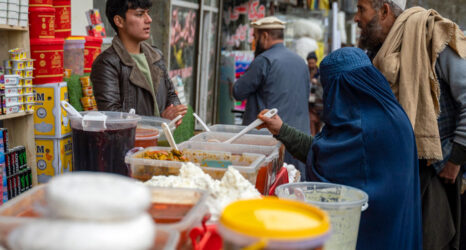At the South Korea-China-Japan Comfort Women International Conference held at Seoul City Hall last week, South Korean researchers presented a chilling discovery: the first video evidence of a mass grave of so-called comfort women.
The graphic video shows multiple naked female corpses missing their heads and other body parts. The gruesome site, presumed to be where a massacre of comfort women took place, is overlooked by a soldier who surveys the bodies. According to Newsweek, the footage is corroborated by other other photos and documents chronicling the killing of 30 women and girls. One of these documents includes a diary entry from an Allied soldier that reads: “Night of the 13th, the Japs shot 30 Korean girls in the city.”
Coined by Japanese historians, the term “comfort women” refers to the thousands of Korean and Chinese women that were forced into sex slavery by the Imperial Japanese Army during World War II. Comfort women were repeatedly raped, beaten and forced to have abortions if they became pregnant. Of the estimated 200,000 women captured, 75 percent of them died. The few that did survive were left infertile due to venereal diseases they contracted from the Japanese soldiers.
The Empire of Japan was not only aware of this wartime sex trade—in which women across Asia were coerced, kidnapped and enslaved to work in brothels—but helped organize it. After the war, the Japanese government denied their own involvement, maintaining that the trade was privately-owned and only used professional sex workers. But comfort women talked back, and in the early 1990’s 238 came forward with testimonies of their imprisonment. These allegations were further supplemented by Japanese historian Yoshiaki Yoshimi, who found documents directly linking the government to the brothels—some of which even sported the personal seals of high-ranking Imperial officers. In 1993, after decades of denying any connection with the military brothels, Chief Cabinet Secretary Yohei Kono finally issued a public statement confirming that the Japanese government was “directly or indirectly” involved with the comfort women system.
This apology marked a significant victory for the survivors, activists and human rights advocates who had been campaigning for the Japanese government to take accountability for these war crimes for years, but that victory was short-lived. Fourteen years later, in 2007, Japanese Prime Minister Shinzo Abe once again asserted that there was no evidence of the military forcing the women into sexual slavery. It wasn’t until 2015, when nudging from Washington for its two allies to repair ties, that Japan and South Korea struck a deal to resolve the decades-long dispute—and Tokyo gave 1 billion yen to a comfort women fund as restitution for their crimes.
Earlier this year, South Korea’s foreign minister urged leaders to revisit these issues at the top UN rights body convening in January, calling for a “victim-centered approach.” It wasn’t until this past Monday that Japan responded with a formal complaint. “That is her assessment of their approach,” Junichi Ihara, Japan’s ambassador to the U.N. in Geneva, told reporters. “Japan is of the view that Minister Kang Kyung-wha’s bringing up the issue in her statement… is totally unacceptable.” Ihara’s assessment on the matter fell short when the video footage of the mass grave was released less than a day later.
Surviving comfort women have still never received the legitimate remorse they deserve, or fair reparations, for the crimes of humanity committed against them. Instead, leaders have continued to speak about these human rights violations as a public service worth upholding. “When soldiers are risking their lives by running through storms of bullets,” Toru Hashimoto, the mayor of Osaka, said in 2013, “and you want to give these emotionally charged soldiers a rest somewhere, it’s clear that you need a comfort women system.”
Denying and excusing violence against women for the sake of male “comfort” is a cultural staple the world over—and not just during wartime, but all the time. To this day, violence against women remains rampant across the globe, and women in conflict situations remain highly vulnerable to sex trafficking and rape.
In this context, Hashimoto’s question begs some more: How does one account for the millions of women around the globe that are kidnapped, raped, beaten and murdered everyday? If those who stand in the way of justice for comfort women don’t have an answer, they can borrow one from American men and assert that “not all men” commit these crimes—but since that fact was never disputed, the question remains. How do millions of women around the globe continue to have acts of violence committed against them? How will we combat it?
The women of the world—and especially the survivors of Japan’s comfort women program—have waited too long for the answers.





